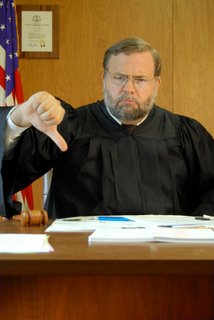 In a major decision today from New York’s highest court, defendants have been granted permission to privately interview the treating physicians of personal injury plaintiffs after the close of discovery. In permitting this, the Court appears to have cast aside the privacy provisions of the federal Health Insurance Portability and Accountability Act of 1996 (HIPAA).
In a major decision today from New York’s highest court, defendants have been granted permission to privately interview the treating physicians of personal injury plaintiffs after the close of discovery. In permitting this, the Court appears to have cast aside the privacy provisions of the federal Health Insurance Portability and Accountability Act of 1996 (HIPAA).
The decision in Arons v. Jutkowitz is expected to open a small floodgate of attempts by insurance companies and defense lawyers to privately approach treating physicians without the knowledge or permission of the patients and take statements without their counsel or any court reporter being present.
The conservative Judge Read, writing for the majority, concluded that plaintiffs can be forced to sign HIPAA compliant authorizations to allow the interviews. Because this will be done outside the formal deposition process, however, the usual safeguards regarding relevance and accuracy are no longer in place.
So how does the court reconcile the privacy that HIPAA affords with its determination to allow private interviews? While some medical conditions are certainly waived by bringing suit, others may not be. The solution, according to Justice Read, is to simply trust the defense lawyers. Justice Read wrote with regard to the HIPAA issue:
“it is of course assumed that attorneys would make their identity and interest known to interviewees and comport themselves ethically”
So that’s it. Congress’s attempt to safeguard medical privacy by statute has now been overruled by New York’s Court of Appeals. If a passenger in a car accident brings lawsuit regarding a broken hip, for instance, the privacy of the person’s unrelated drug, pregnancy or psychiatric history is no longer protected by federal statute. It’s only protected by trusting the lawyer defending the case for the insurance company. HIPAA is gone.
The dangers and risks of this decision will now play out over the next several years, as doctors are informally interviewed and then confronted with statements at trial that they claim were never made or were taken out of context. It will also come up when doctors are interviewed and questioned about facts that may be wholly unrelated to the injuries in question and still protected by HIPAA.
This is a bad decision that will inevitably result in a mountain of litigation. And given the apparent challenge and conflict to the federally mandated HIPAA, I am left to wonder if an appeal to the US Supreme Court will be attempted.
Justice Piggott, writing in dissent about the judicial activism of the majority, addressed the procedural discovery process we have in New York:
Our holding today grants defense counsel the unprecedented ability to compel a plaintiff, who has placed his or her mental or physical condition in controversy, to execute authorizations allowing defense counsel to speak to his or her treating physicians outside the formal discovery process and without the plaintiff being present…it is “beyond cavil” that “neither the machinery in CPLR Article 31 nor the applicable Uniform Rules [for New York State Trial Courts] provide for the disclosure of this nature.”
(Eric Turkewitz is a personal injury attorney in New York)
—————————————————————————–
Addendum:
- See previously: Medical Malpractice – Defense Firms Denied Right To Interview Plaintiff’s Treating Docs (3/19/07, this site)
- New York, New York! (Arons allows ex parte interviews of treaters) (Beck/Herrmann with opposing view)
Links to this post
a divisive decision — arons v. jutkowitz & kish v. graham …
most of you have already trudged through the new york court of appeals’ 32-page decision in arons v. jutkowitz and kish v. graham. for those who didn’t, the court held that defense counsel may conduct an ex parte interview with aa …posted by Matt Lerner @ December 09, 2007 5:09 PM
a divisive decision — arons v. jutkowitz & kish v. graham …
most of you have already trudged through the new york court of appeals’ 32-page decision in arons v. jutkowitz and kish v. graham. for those who didn’t, the court held that defense counsel may conduct an ex parte interview with aa …posted by Matthew Lerner @ December 05, 2007 9:46 PM
New York, New York! (Arons allows ex parte interviews of treaters)
We love it when courts agree with us. (And don’t say, “Because it happens so rarely.”) We posted in February that HIPAA does not preempt state laws that allow defense counsel to speak informally (and without plaintiff’s counsel present) …posted by Beck/Herrmann @ December 04, 2007 9:16 AM
hipaa goes dark in new york
well, broadway is still dark this week, and it seems the judges of the new york court of appeals don’t want the courts of the empire state to do much work either — at least not the sort of work that entails thinking hard about whether …posted by David Harlow @ November 28, 2007 9:27 AM
“NY Court of Appeals Allows Defendants to Privately Question …
“NY Court of Appeals Allows Defendants to Privately Question Plaintiff’s Doctors”: Eric Turkewitz has this post at the “New York Personal Injury Law Blog.” You can access today’s ruling of the New York State Court of Appeals — that …posted by @ November 27, 2007 2:40 PM
hipaa release scare tactics by settlement professionals have no …
one structured settlement professional has been advertising that it has language to put into a hipaa release that purports to limit the distribution of a plaintiff’s medical records in such a way to prevent the defendant from obtain …posted by structuredsettlements @ January 14, 2008 1:36 AM


